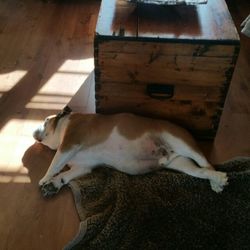Sturm
Sturm
Collio Ribolla Gialla
Crisp, little dry with a citrus taste. Went well with grilled chicken! — 6 years ago
Sturm
Sauvignon Blanc 2016
Gooseberry, star fruit, basil, tomato stem and lime zest. Hint of white peach and jasmine flower. Soft and pleasant on the entry with great lift and acidity throughout the lengthy mid palate and slowly building minerality on the finish. Wonderful balance and finesse. Stay classy, Friuli. — 8 years ago
Oscar Sturm
Tocai Friulano 2005
2005 showing great!! Mineral and dens with a beautiful automaticity... — 11 years ago
Domaine Weinbach
Altenbourg Pinot Gris 2009
Sorn. Rich, ripe fruit nose. Beautiful dark golden colour. Medium sweet, textured, complex.
The Fallers’ 2009 Pinot Gris Altenbourg (from lower-lying, non-grand cru parts of that site) introduces a sense of primary juiciness and buoyancy relative to its Saint Catherine counterpart, with only a bit over 14% alcohol and prominent residual sugar. Overripe peach, musk, black truffle, and orange are the prominent elements of this decadently rich, satisfyingly long Pinot Gris likely to be best drunk over the next 3-5 years. (No Cuvee Laurence was produced from this vintage.)
Both 2008 and 2009 were clearly challenging at Domaine Weinbach, many of their wines from the latter illustrating that vintage’s weaknesses. (Catherine and Collette Faller elected not to present me their – admittedly, at the time not yet officially approved – 2009 vintage V.T. and S.G.N. bottlings.) Harvesting at this estate is generally on the late side and in this instance continued until October 20, which I hypothesized while tasting might have been a bit too late for such nearly uniformly ripeness as seems to have prevailed by late September of 2009. The first vintage from this estate that I tasted as young wine was 1979 (‘though I did not visit until 1984), so I’ve experienced a full range of collections from cool, late growing seasons such as have nowadays become scarce; but only from a couple of genuinely ripeness-deficient vintages of the 1980s, and then again from 1996, can I recall acid levels as prominent as those harbored by the Weinbach 2008s, and this has rendered some of them youthfully severe or nervous, though one hopes and indeed expects that the best will calm down, round out, and harmonize over time, without losing their vivacity, focus, and in some instances power. Don’t be misled by the scores I have assigned to this 2008 collection: really, a question mark hangs over them all because it’s how these wines respond to bottle age which will determine the verdict that matters. A look at the 1996s provides some tantalizing clues but little confidence. Some 1996s have evolved beautifully, while others seem caught in a time warp, their agitated, faintly aggravating adolescent Sturm und Drang almost unseemly for their age. With all this in mind I recently revisited a bottle of 1981 Weinbach Gewurztraminer V.T. – a wine whose residual sugar was lower than that of most non-V.T. Gewurz at this address today, and whose acidity in youth was formidable – and that wine was spectacular. And as you’ll see from my notes, Gewurztraminer is the most likely candidate for stardom in the 2008 Weinbach collection. (For considerable detail on the slope origins of the many Weinbach cuvees, consult my reports in issues 188 and 175.) I can’t resist noting that suggested retail prices for the most recent releases are little more than half what I was being quoted as recently as three vintages ago, making the best of the current crop especially worthy of wine lovers’ attention, even though neither 2008 nor 2009 is among this illustrious domaine’s most consistently successful collections.
— 3 years ago
Torcuato Huertas Tomás
Pvrvlio White Blend
Reminds me of "Sturm" — 9 years ago
Sturm
Friulano 2019
Meant to appeal to the cool kids, this scribbly offshoot is biodynamic but pretty clean overall. Pinot Gris in baby rose' form. Visually appealing - a glint of elegant rose gold. Delicate pear, yellow apple, jasmine flower. Nice round weight and overall pretty pleasant. — 4 years ago
Oscar Sturm
Collio Pinot Grigio
Not too dry, not too sweet. Great with food!
Drank it with Laci for her welcome dinner and our engagement celebration. — 7 years ago
Sturm
Friulano Ribolla Gialla 2015
My type of Tocai: power fruits and herbs and round smoky minerals filling the mouth — 9 years ago








Mike Lev
Decanter: “2022 Sturm Sauvignon White Label - Enchanting, sweet nectarine, gooseberry and lime zest aromas underpinned by a delicious core of smoky nuts and emboldened by a refreshing acidity. Lifted and long. 13.0% alc. 95pts”
Agree! — 7 months ago